In 2022, Vincent Papaix discussed ILM‘s visual effects contributions to the Hawkeye series. Following that, he worked on projects like The Old Man, The Guardians of the Galaxy Holiday Special, Guardians of the Galaxy Vol. 3, and The Boys in the Boat. Today, he’s back to talk about his return to the Deadpool universe.
How did you and ILM get involved on this show?
ILM has a longstanding history of working on Marvel movies, which always makes for an exciting and enjoyable collaboration. I also worked with Swen Gillberg during my time at Digital Domain on Furious 7. It was great to work together again.
What was your feeling to be back on a Deadpool show?
Returning to work on a Deadpool project was an absolute blast. I have great memories from the first film, where the filmmakers were incredibly open to ideas and fostered a truly collaborative environment. The experience with Deadpool & Wolverine was no different—in fact, it was the most enjoyable and collaborative project I’ve ever been a part of. The enthusiasm from everyone involved was palpable, and I think that energy really shines through on screen.
How was the collaboration with Director Shawn Levy and VFX Supervisor Swen Gilberg?
Working with Director Shawn Levy and VFX Supervisor Swen Gilberg has been an incredible experience. The collaboration was rooted in trust, allowing us to openly solve problems and pitch new ideas, all with the shared goal of enhancing the film. The entire process was a lot of fun.
What are the sequences made by ILM?
ILM handled the sequences set in the Void. This includes the arrival of Deadpool and Wolverine, as well as the reintroduction of characters like Human Torch, Sabretooth, and other X-Men. We also worked on the caravan sequence that transports the heroes to the Ant-Man arena, enhanced the battle within the arena, and contributed to every shot featuring Alioth.
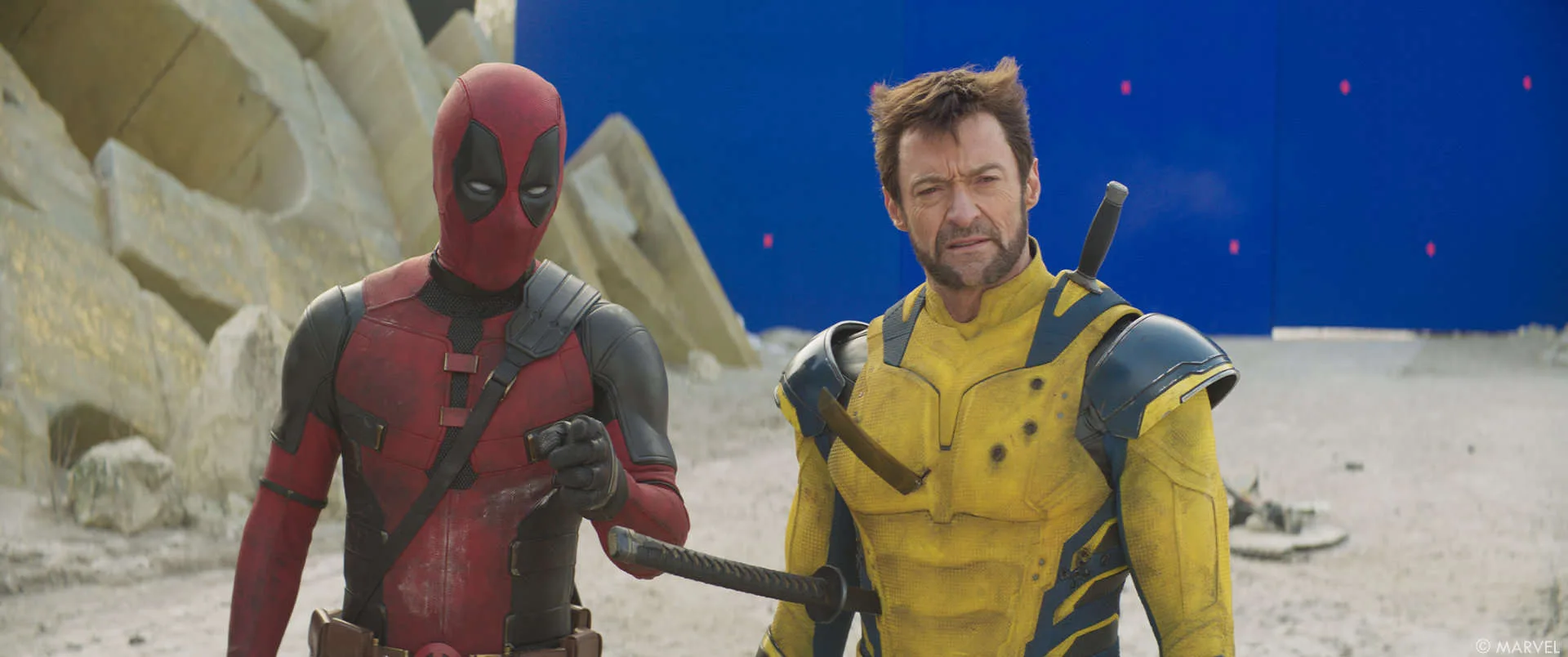
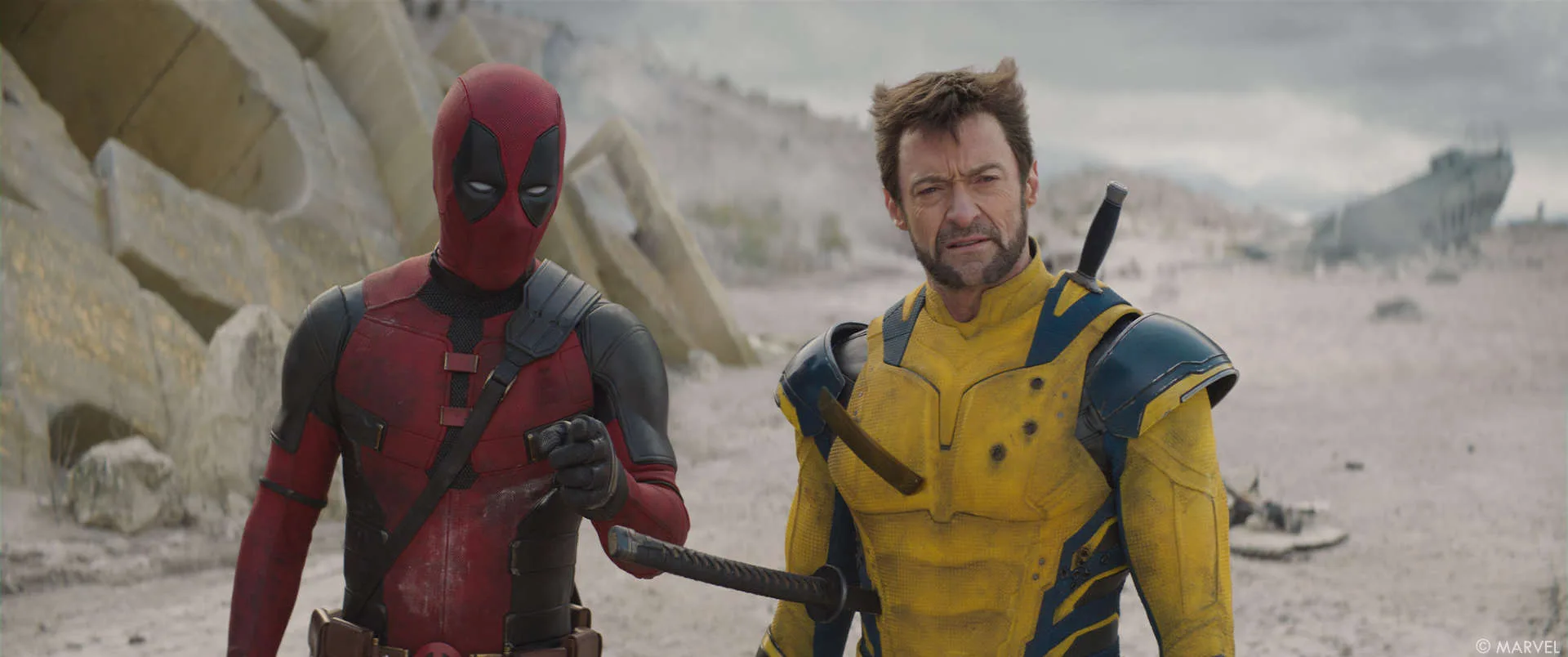
How did the VFX team conceptualize and design the environment of The Void?
The Marvel team supplied us with concept art for The Void, along with plates from the summer shoot. From there, with our ENV supervisor Timothy Jones, our environment team crafted CG replicas of the practical set and built an entire CG world for The Void, complete with countless pieces of detritus.
What technologies were used to render The Void’s vast and desolated environment?
To create the vast and desolate environment of The Void, our environment team leveraged their extensive expertise in building photorealistic digital worlds. For this project, we chose to work with 3ds Max and V-Ray for rendering. These tools were selected to meet the production’s specific needs, allowing us to achieve the high level of realism required for the intricate and expansive landscape of The Void.
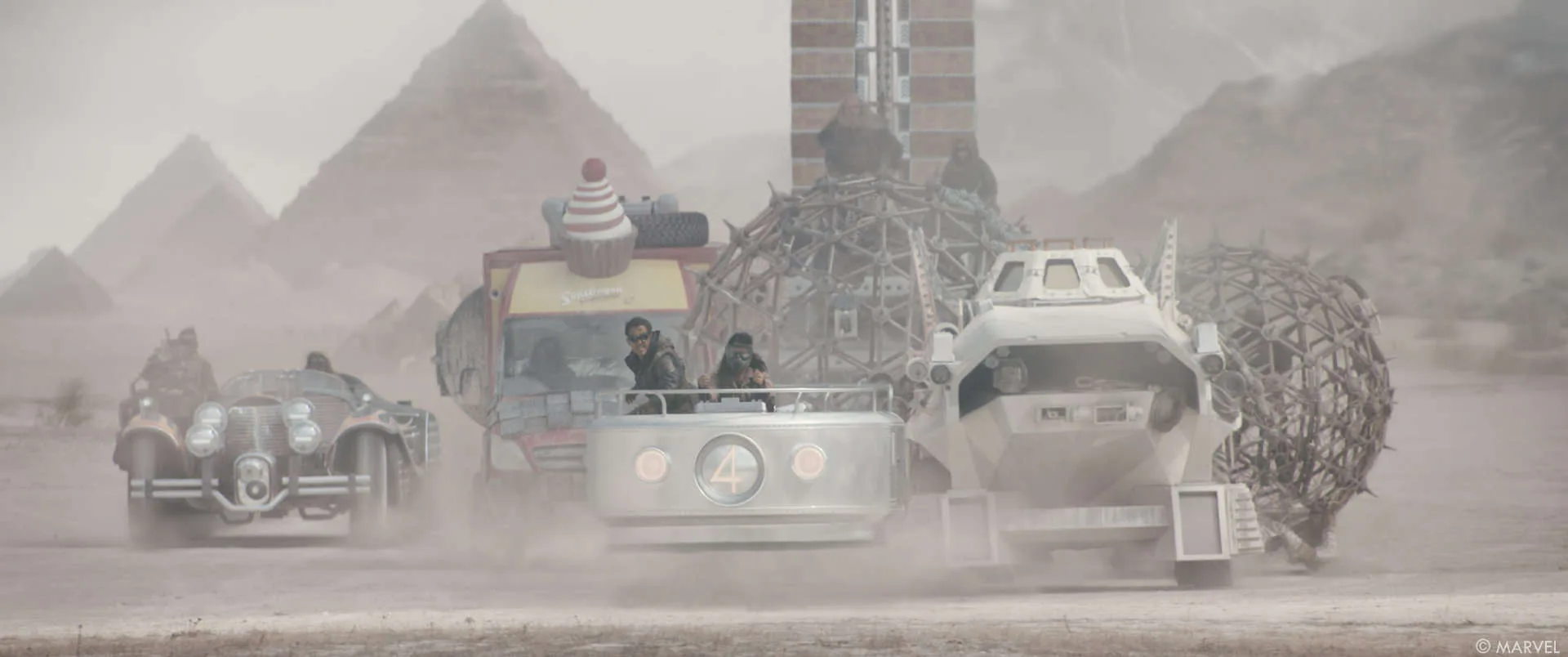
How did the VFX team ensure continuity and coherence between the practical and digital sets?
Our approach focused on fully integrating plate photography into the digital environment. We meticulously matched the lighting direction and sun intensity to ensure a seamless blend between the practical set and our digital extensions. We adjusted the sky by adding clouds or openings based on the original plate photography and sequence look to enhance continuity. Additionally, we relied on various atmospheric effects like dust, haze, and volumetrics to achieve a smooth final integration between the physical and digital elements.
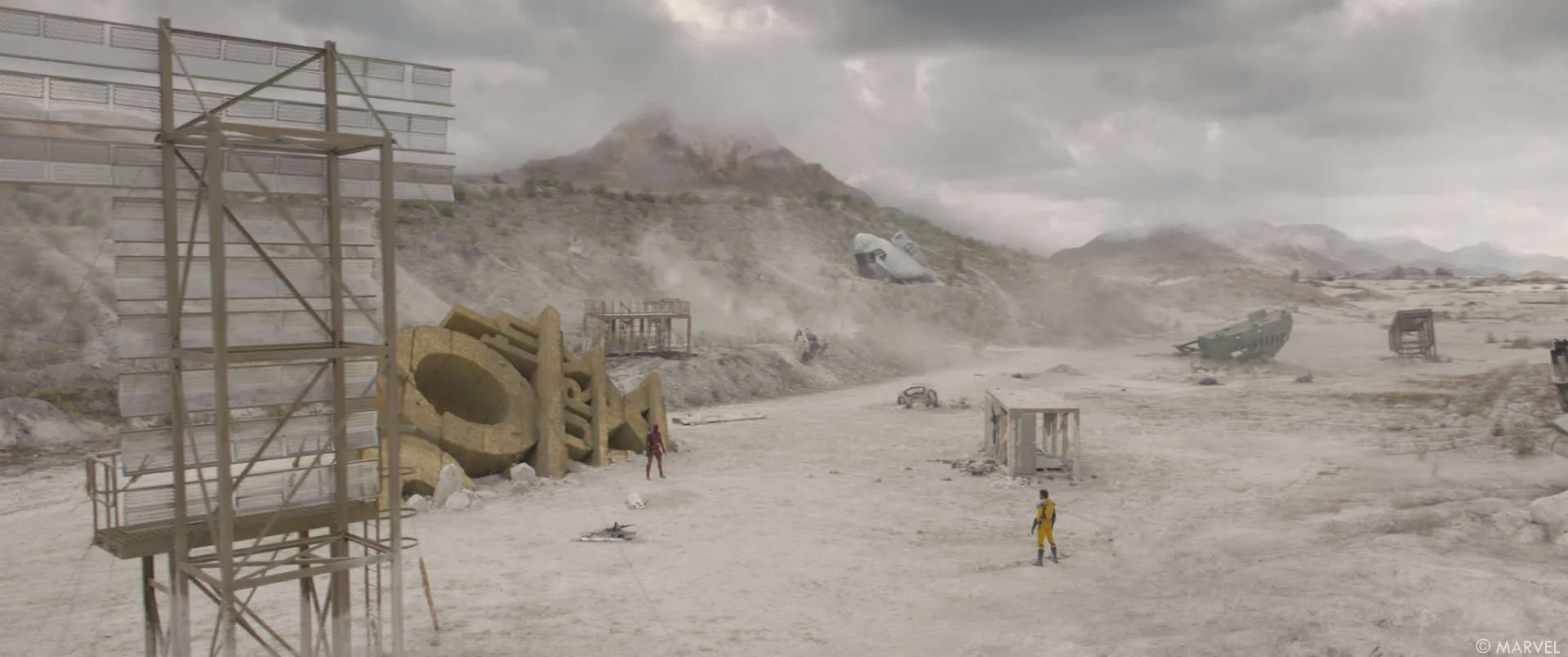
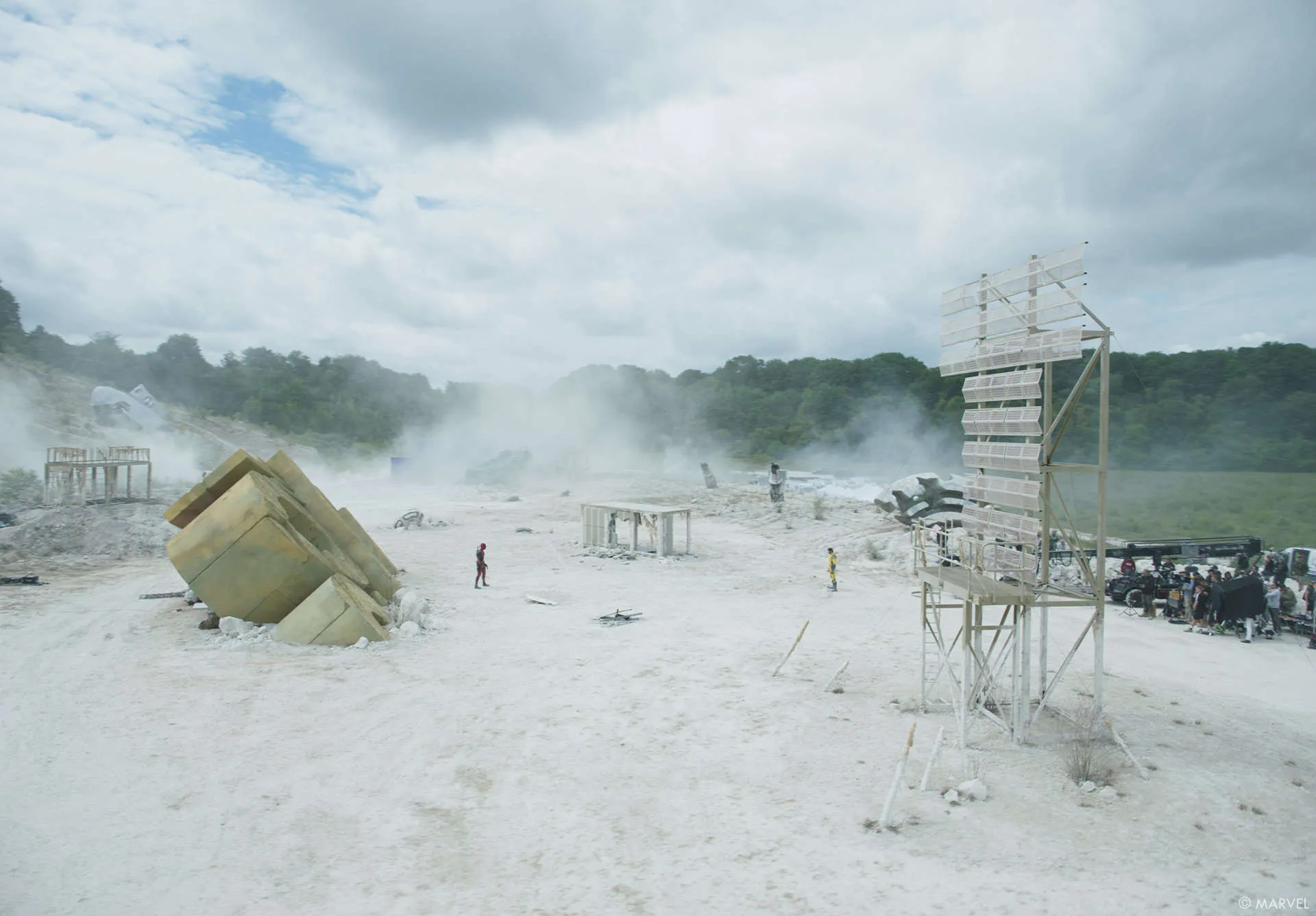
What challenges did your team face in creating the giant creature Alioth?
Creating the giant creature Alioth was an exciting challenge due to its massive scale and complexity. Given the intricate nature of the simulation, each iteration could take days to complete. T o manage this complexity, we had to divide Alioth into separate zones—such as the head, body parts, and additional wispy layers. All these elements were then deep-composited to bring the creature to life on screen.
How did the massive size and the cloudy aspect of Alioth affect your work?
The massive size and cloudy nature of Alioth required careful coordination across multiple departments. Every aspect of Alioth was meticulously art-directed. The animation department, led by Alexander Poei and Greg Kyle, brought the giant beast to life, animating both the skull and various cloud zones. Following that, the FX work was spearheaded by Jiyong Shin, who had previously worked on Alioth for the Loki series and shared his deep knowledge with the rest of the FX team. Given the complexity of this asset, close collaboration between the animation, FX, and compositing teams was essential to create the stunning shots seen on screen. Our production team played a crucial role in wrangling all these elements, ensuring the work was scheduled and organized effectively.
How were crowd simulations handled in the arena with a giant Ant-Man?
We began with motion capture data provided by Marvel. Since each shot was unique, we had to enhance the fight scenes by integrating CG characters alongside the practical stunt performers. Our animation team carefully positioned these digital assets and timed their movements to align with the relevant action, ensuring a seamless blend between the practical and CG elements.
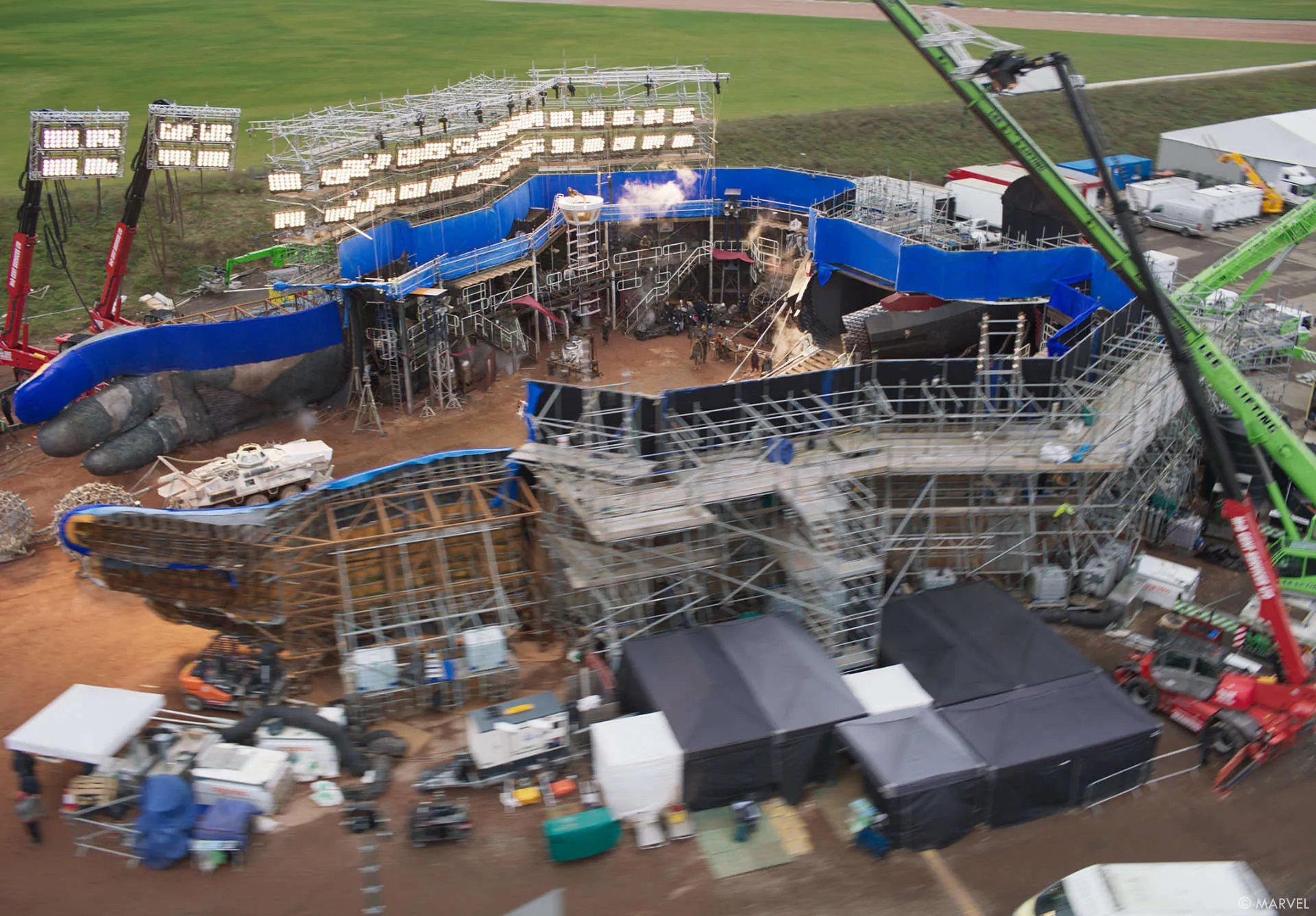
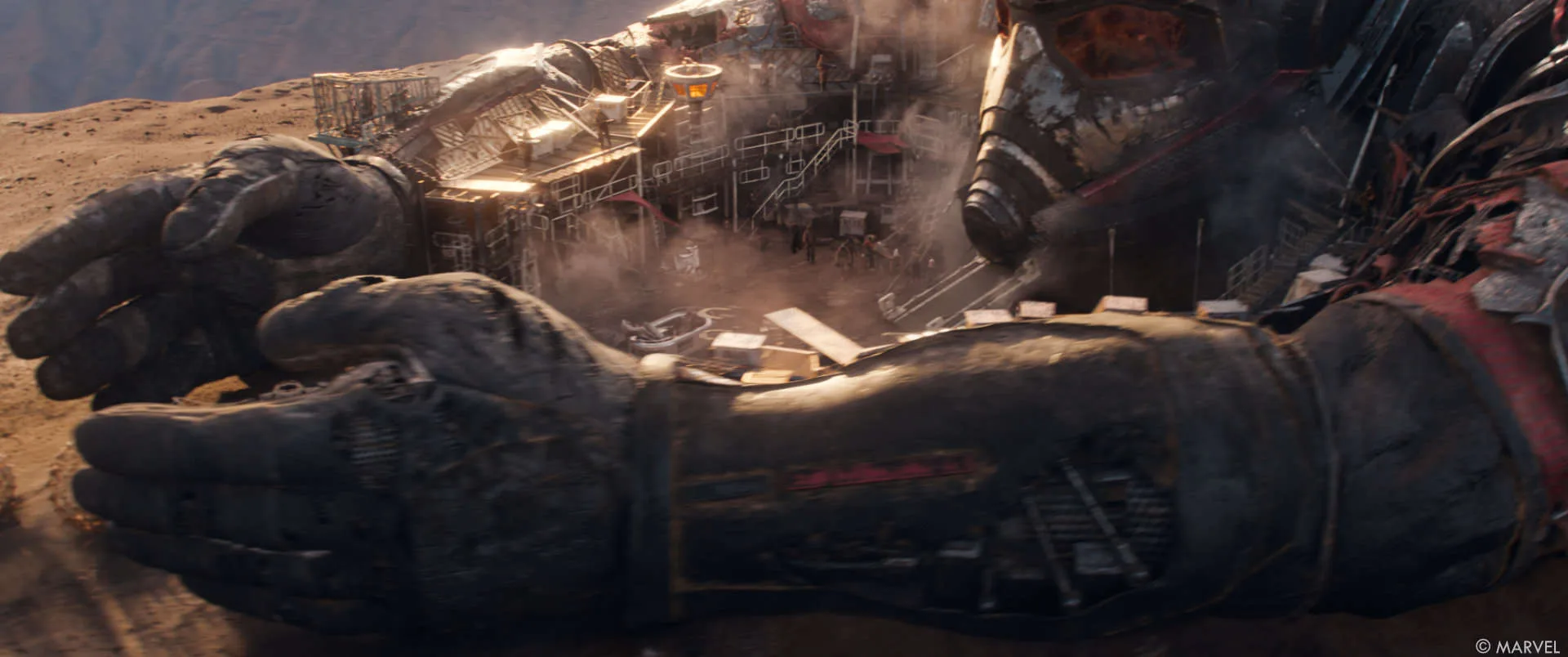
How did the VFX artists choreograph the battle scenes involving multiple CG characters?
The VFX artists began by building on the detailed previsualization provided by our collaborators at Framestore. We then added CG characters, carefully incorporating their unique mutant powers to craft a distinctive battle between the various characters. Our team coordinated the choreography by aligning with the live-action plates while also strategically timing tracers and detonations to direct the viewer’s attention to key moments in the scene..
Can you elaborate on the gore enhancements such as the death of Johnny Storm?
For Johnny Storm’s death scene, we developed a detailed skeleton asset that included accurate representations of bones, flesh, muscles, and organs. This required complex simulations to ensure that each body part moved realistically, with additional layers of blood for added effect. We also meticulously matched Chris Evans’ facial performance to capture the stunned emotion as his skin was removed, ensuring that the visual effects accurately reflected his performance.
Which character was the most complicated to create and why?
The most complex character to create was the Ant-Man arena asset. The practical set included only the first floor, but it was highly detailed with props, cables, dirt, and rust. To create the CG extension, we meticulously analyzed the practical set to then create elements such as the helmet, skull, and Ant-Man’s body. It was essential for this asset to be looking good both from a distance for establishing shots and up close for detailed set extensions. Our asset team crafted this intricate model with attention to various scales, including traditional human scale for decay, dirt, and dust, as well as the giant Ant-Man scale to ensure continuity with previous films. Additionally, we created variants of the asset to reflect different weather conditions, ranging from sunny to snowy, including snow accumulation.
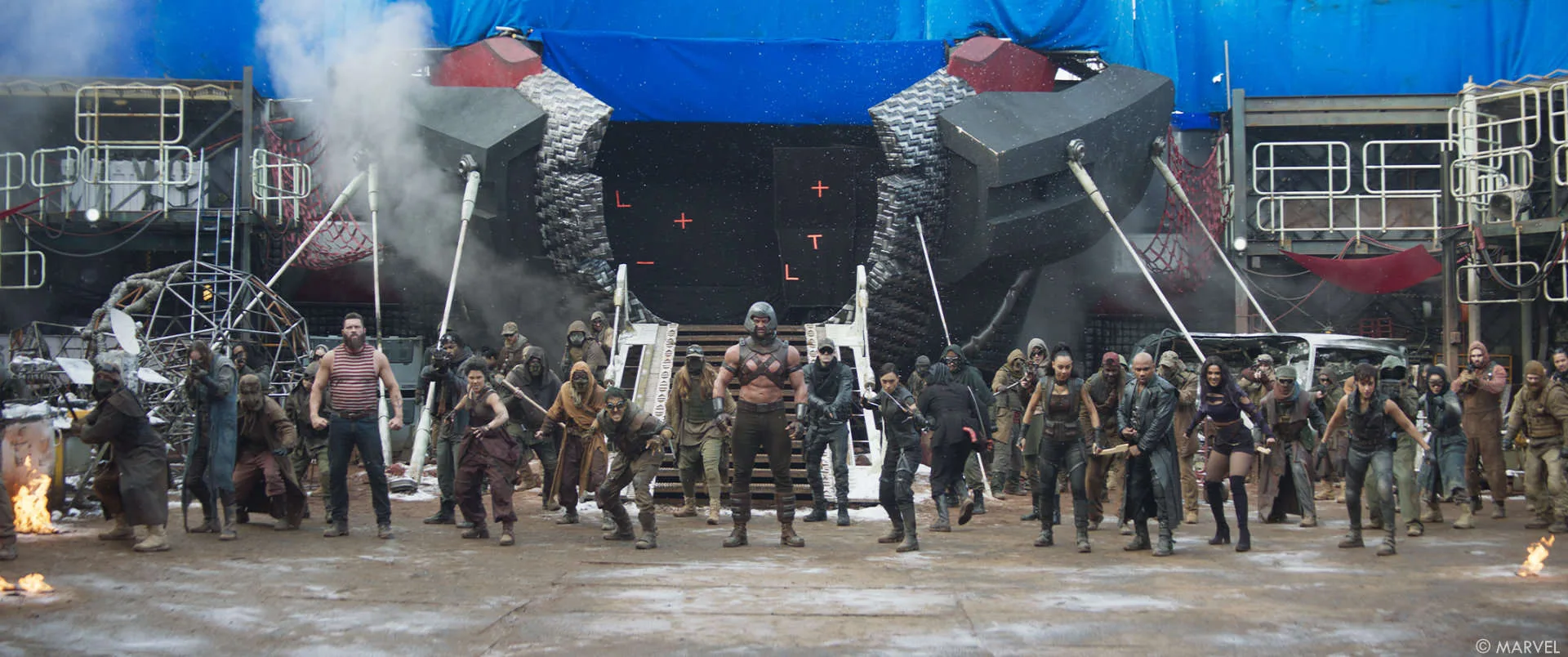

What strategies were employed to maintain visual consistency across different CG-heavy scenes?
Maintaining visual consistency across CG-heavy scenes, particularly for The Void, presented several challenges. Filming exterior scenes with natural light can complicate visual consistency, but it also significantly aids in VFX integration. To address this, our primary strategy was to ensure that the VFX seamlessly blended with the live-action footage. This involved closely matching the lighting and atmospheric conditions of the CG elements to those of the practical scenes. We carefully paid attention to how the VFX shots cut together to maintain a cohesive look throughout the film.
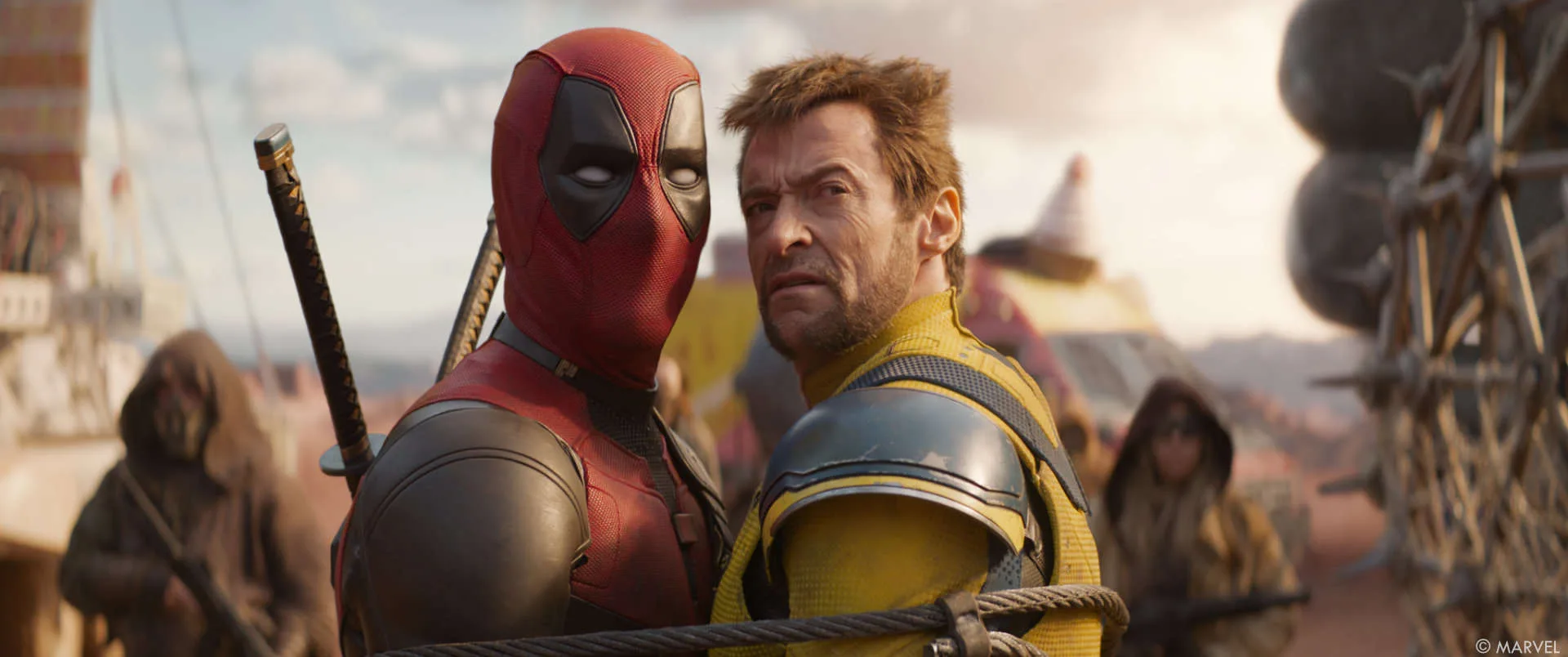
What were the most innovative techniques used in the creation of these VFX sequences?
On set, the amount of practical snow varied between shots, which presented a challenge for visual consistency. To address this, we employed a twofold approach: for scenes with insufficient snow, we added CG snow to enhance the effect, while in cases where there was excessive snow, we developed a clever method to remove the practical snow and replace it entirely with CG snow. This ensured that the snow appearance was consistent and matched the desired look for the sequence.
Were there any memorable moments or scenes from the film that you found particularly rewarding or challenging to work on from a visual effects standpoint?
Due to the actor and writer strike in the summer 2023, the filming has been paused for several months. When production resumed in the middle of winter in the UK, we faced a challenge with the Arena scene, which required strong sunlight. Initially, we were concerned about how the set lights would integrate with our CG extensions. After brainstorming with Swen, we experimented with various sky options to achieve the most natural look, eventually settling on a hazy sun at magic hour. At that point, everything came together, and the image began to feel cohesive, making it a particularly satisfying moment for the team.
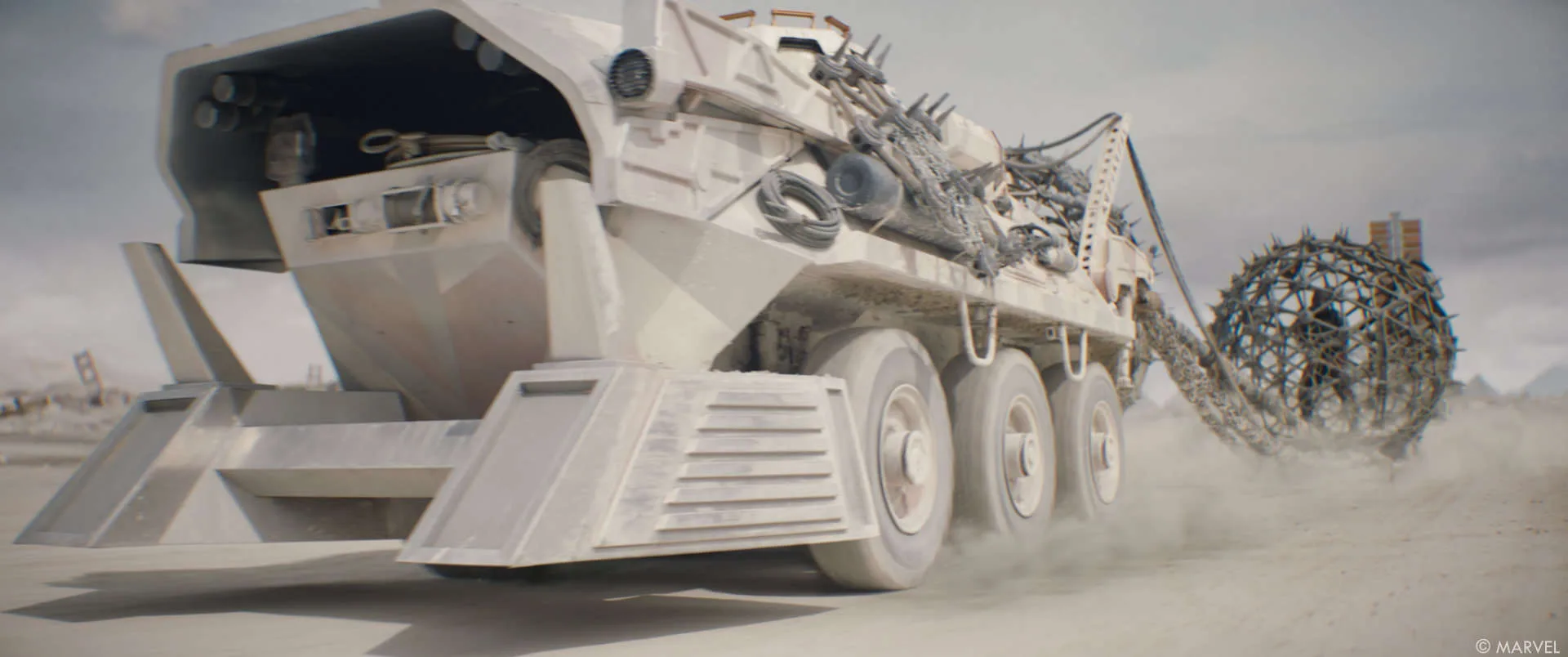
Looking back on the project, what aspects of the visual effects are you most proud of?
First, being invited on set in December 2023 by Lisa and Swen was invaluable. It allowed me to be part of the on-set team and pitch ideas for the final battle’s snow effects. Seeing those ideas transition from pitch to the big screen was incredibly rewarding. Additionally, the dedication and motivation of the ILM team were truly inspiring. Witnessing such collective energy and enthusiasm was remarkable, and I’m very proud of what we achieved together.
Is there something specific that gives you some really short nights?
Fortunately, thanks to the incredible team of artists and production staff at ILM, including Associate VFX Supervisor Georg Kaltenbrunner, I was able to rest well at night. Their dedication and expertise ensured that everything ran smoothly, minimizing stress and allowing me to get a good night’s sleep.
What is your favorite shot or sequence?
I have several favorite shots and sequences. One standout is the iconic fight between Deadpool and Wolverine in the Void, especially with the memorable line, “Let’s f*cking go!” I also loved bringing back beloved characters like Johnny Storm, Blade, Elektra, and X-23, as well as introducing Channing T atum’s Gambit. Seeing the audience’s reaction when these characters appear on the big screen was incredibly rewarding.
What is your best memory on this show?
My best memory from this show is the collaborative experience with the entire team. Working
alongside our talented artists, as well as with Lisa, Swen, Shawn, and Ryan, was truly exceptional. The synergy and creativity that flowed through our interactions made the process incredibly fulfilling and memorable.
How long have you worked on this show?
Since April 2023.
What’s the VFX shots count?
614 shots done by ILM.
What is your next project?
It’s too early to share details, but I’m very excited about the upcoming project!
A big thanks for your time.
WANT TO KNOW MORE?
ILM: Dedicated page about Deadpool & Wolverine on ILM website.
Swen Gillberg & Lisa Marra: Here’s my interview of Production VFX Supervisor Swen Gillberg and Production VFX Producer Lisa Marra.
© Vincent Frei – The Art of VFX – 2024





Have a few questions about the stuff that are present in the void during the Deadpool, Wolverine fight scene/Johnny and henchmen and the captured Minuteman arrive and the scene with pyramids and the one with the Brooklyn Bridge
Also about the stuff present during the resistance henchmen fight scene